Leicester’s Roman inhabitants lived in a wide variety of houses, ranging from rows of small, simple rectangular buildings built along street fronts (with domestic rooms located behind shops or workshops) to larger, elaborate townhouses built around colonnaded courtyards.
- One Roman temple has been found in Leicester, a Mithraeum dedicated to the Persian god Mithras
- Leicester had a Septisonium, a temple dedicated to the seven gods who represented the days of the week
- A rare depiction of the Egyptian god Anubis has been found in Leicester. It is on a small carved ivory panel from a Romano-Egyptian box
A diverse and multicultural city for 2000 years
A Mithraeum
Only one definite Roman temple has been found in Leicester so far, probably a Mithraeum, a place where the Persian god Mithra or Mithras was worshipped. Within the Roman empire, Mithraeism was a popular mystery cult from the 1st to 4th centuries AD. The temple was found south of the Jewry Wall Roman baths in 1969 during the construction of the Holiday Inn on St Nicholas Circle.
The building was a small aisled hall, some 6m wide and 15m long, with apsidal transepts and a possible ‘sanctuary’ at its eastern end, very similar to a church. The floor of the nave was sunken below that of the aisles and the walls were painted red. Niches built into the walls may have been for statues and the layout of the building appears to have been designed for feasting and initiation, with worshipers gathering along reclining couches lining the walls.
The temple appears to have been built in the early 2nd century AD and coins found on its final floor suggest it remained in use into the late 4th century.
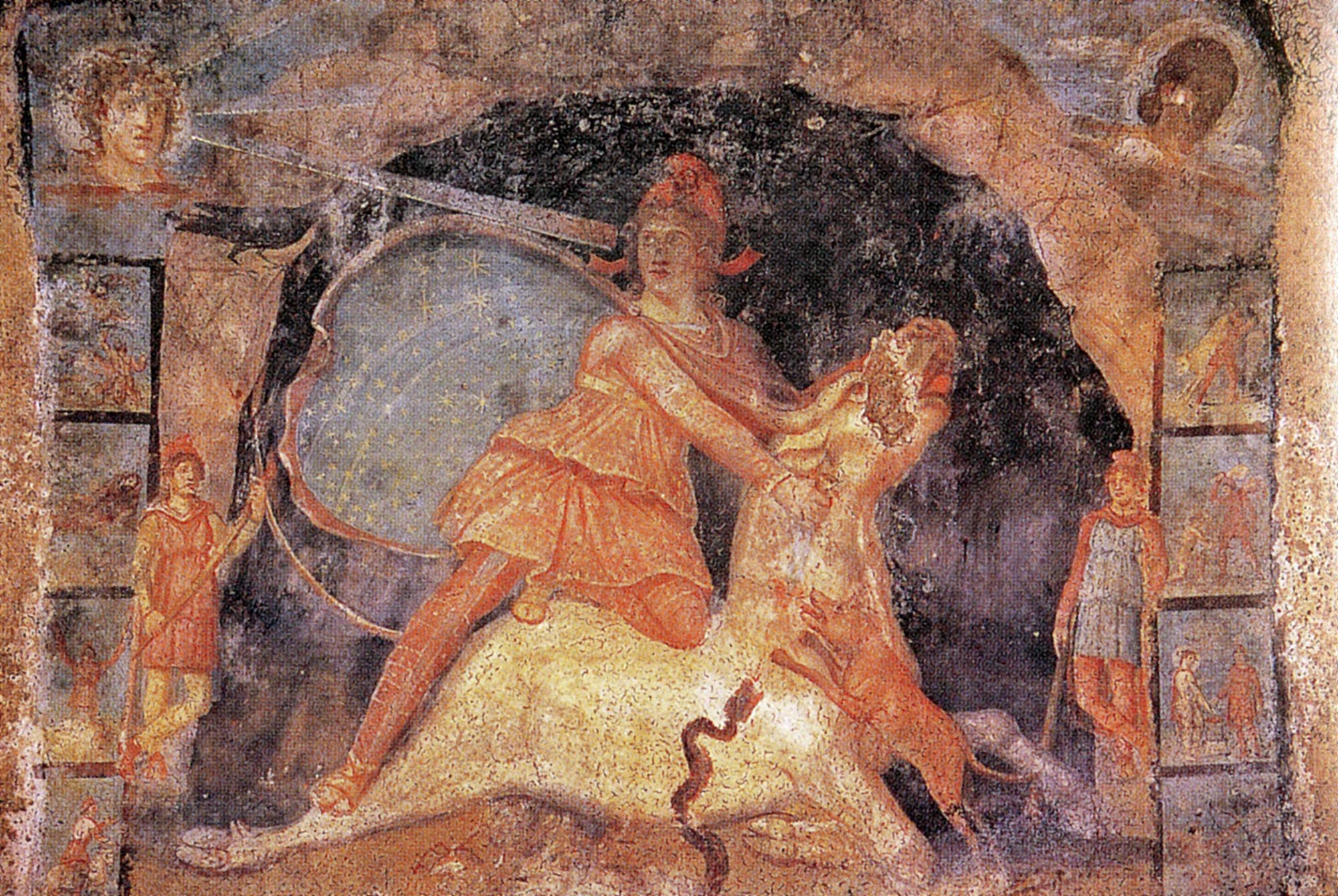
A Septisonium
There is also reference to a structure called a septisonium in Leicester. This was dedicated to the seven gods after whom the Roman days of the week were named – the Sun and Moon, Mars, Mercury, Jupiter, Venus and Saturn. It is only the fourth known reference to such a structure in the Roman Empire. Unfortunately, we don’t know where it stood, although it was possibly close to the macellum as a column with scale decoration typically associated with celestial deities was found there in the 19th century.
Other beliefs
Although no other temples are known about, the beliefs of Leicester’s Roman inhabitants can be seen in many of the personal items they had lost, or broken and thrown away- reflecting the city’s diverse and multicultural tastes. During the excavation of the Vine Street courtyard house, archaeologists found a silver intaglio ring depicting the Roman god Mars and the broken torso of a small white-clay figurine of the Roman goddess Venus. The Celtic god Maglus (the only known reference to such a deity) was mentioned on a lead curse tablet, probably from the same building, whilst an extraordinary find of a small rectangular ivory panel depicted the Egyptian god Anubis. This panel was from a relief-carved ivory box, an exceedingly rare luxury item even in Egypt where it was made, so for it to have made its way to Roman Britain is remarkable.
Elsewhere, during the excavations beneath the original Shires shopping centre, a complete, carved bone handle for a folding knife was found. The upper part of the handle shows a small, grotesque figure, probably the Roman god Pan, holding a set of pan-pipes as if he is about to play. Whilst excavation of the macellum site (beneath the Travel Lodge at Highcross Street) found part of a stone altar showing a bearded reclining figure wearing a fisherman’s cap and robe, possibly a water god like Oceanus.
The first Christian?
The Roman Empire officially adopted Christianity as its dominant religion in the early 4th century, under the Emperor Constantine. Evidence of Leicester’s first Christians is elusive, but one clue may come from the burial of a woman in Leicester’s southern cemetery. On her left hand she wore two rings. One, made of jet, had an enigmatic design on its bezel which resembles the Christian symbol iota chi, the Greek initials of Iesous Christos (Jesus Christ).
Gallery
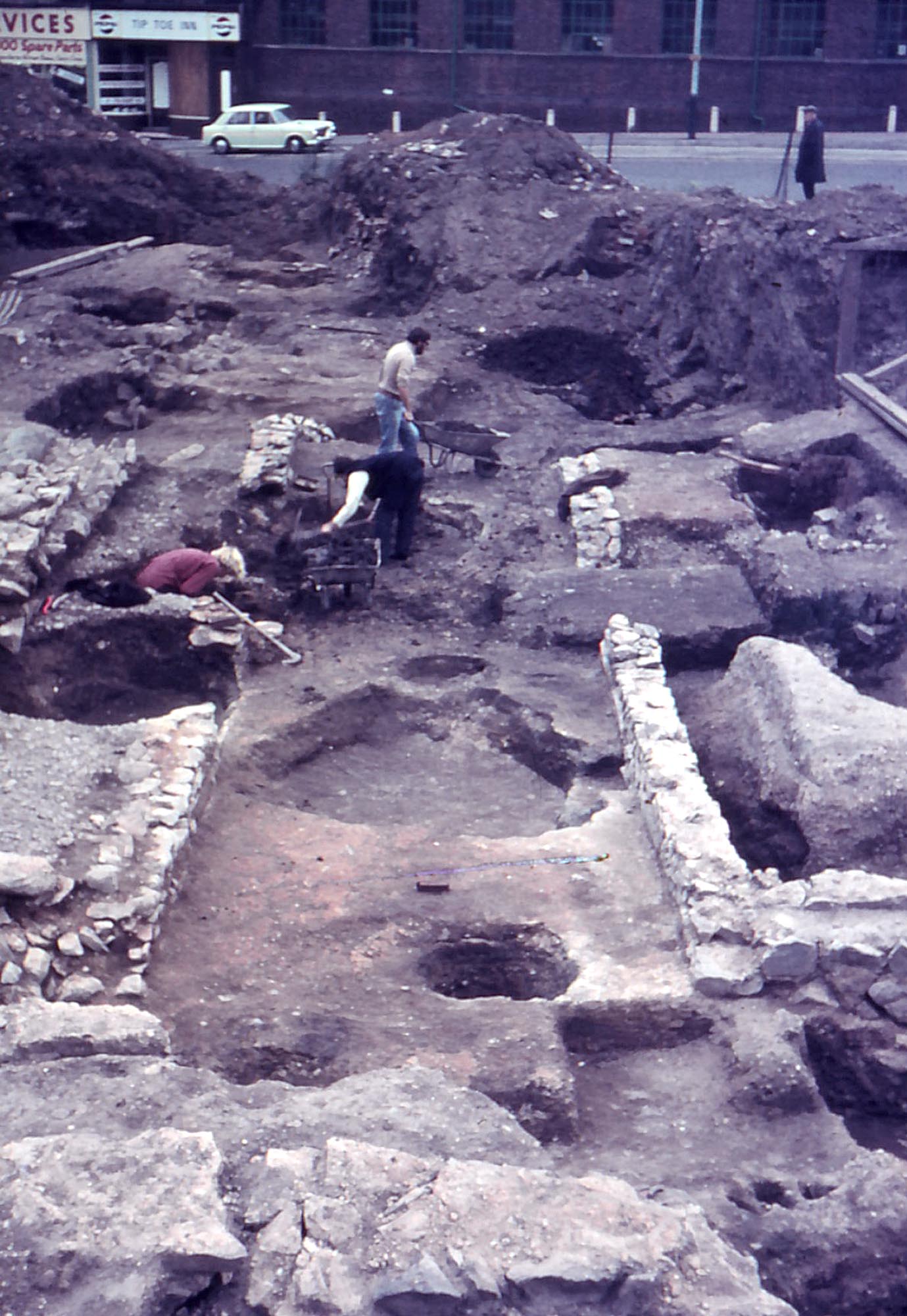
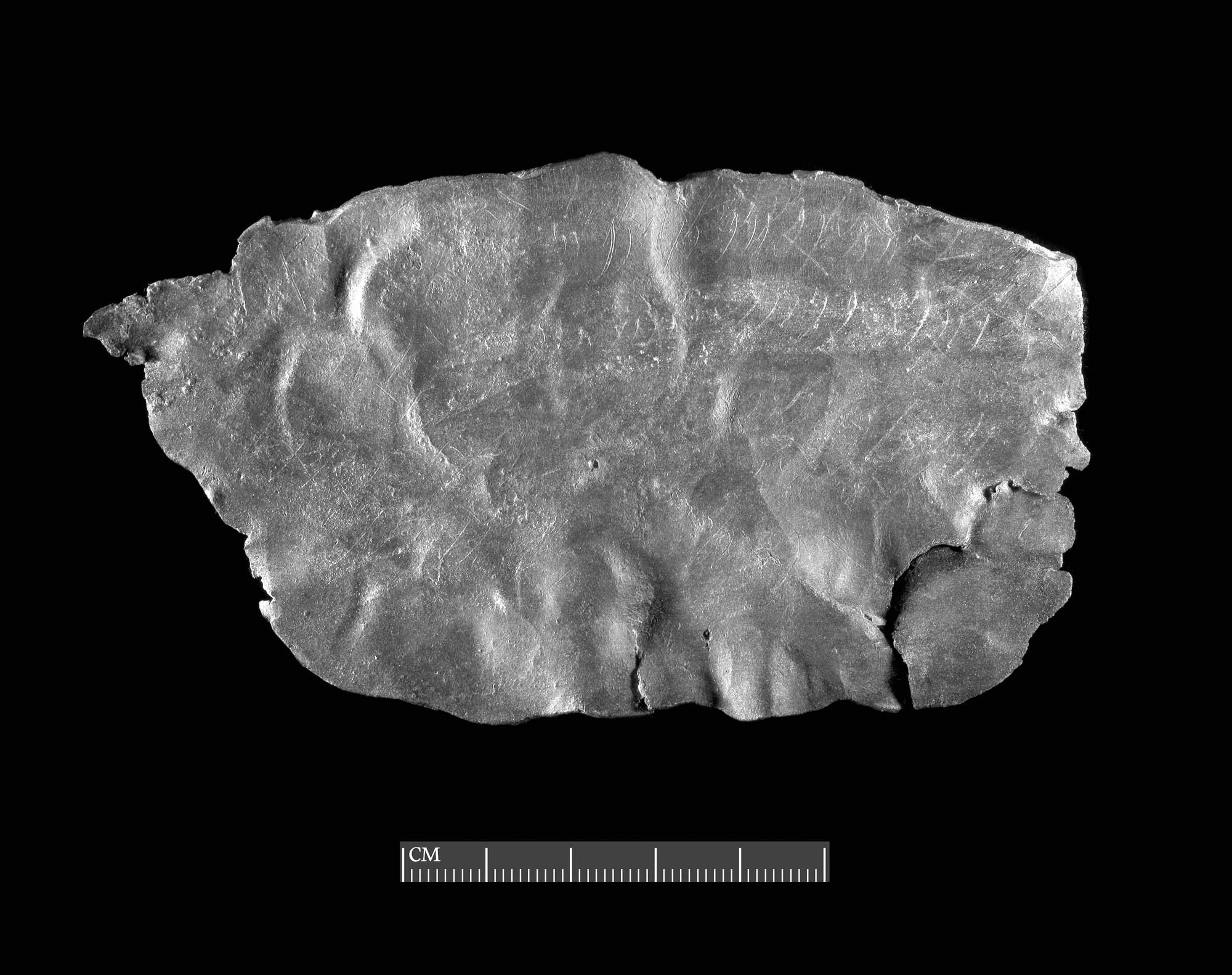
University of Leicester Archaeological Services
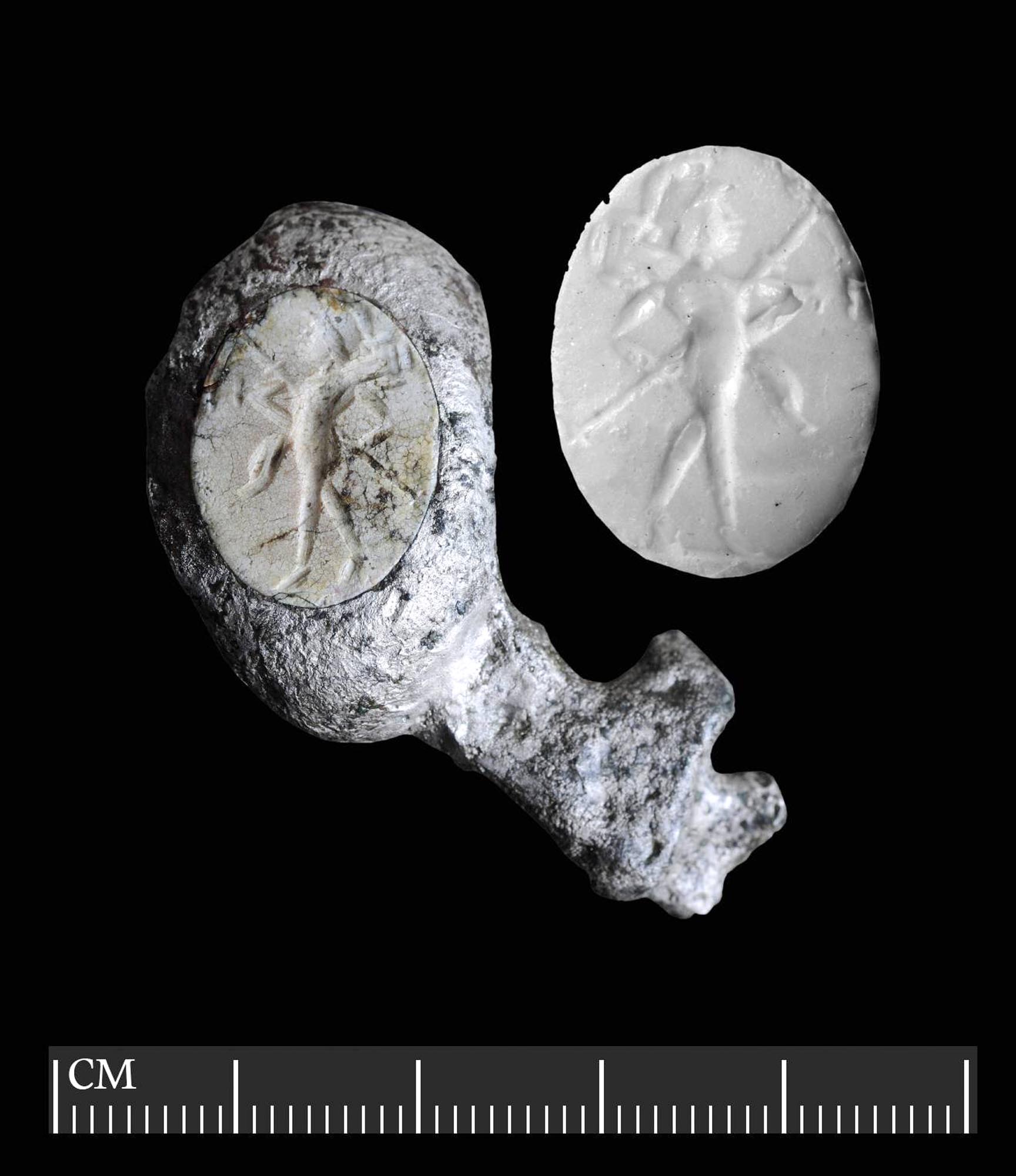
University of Leicester Archaeological Services
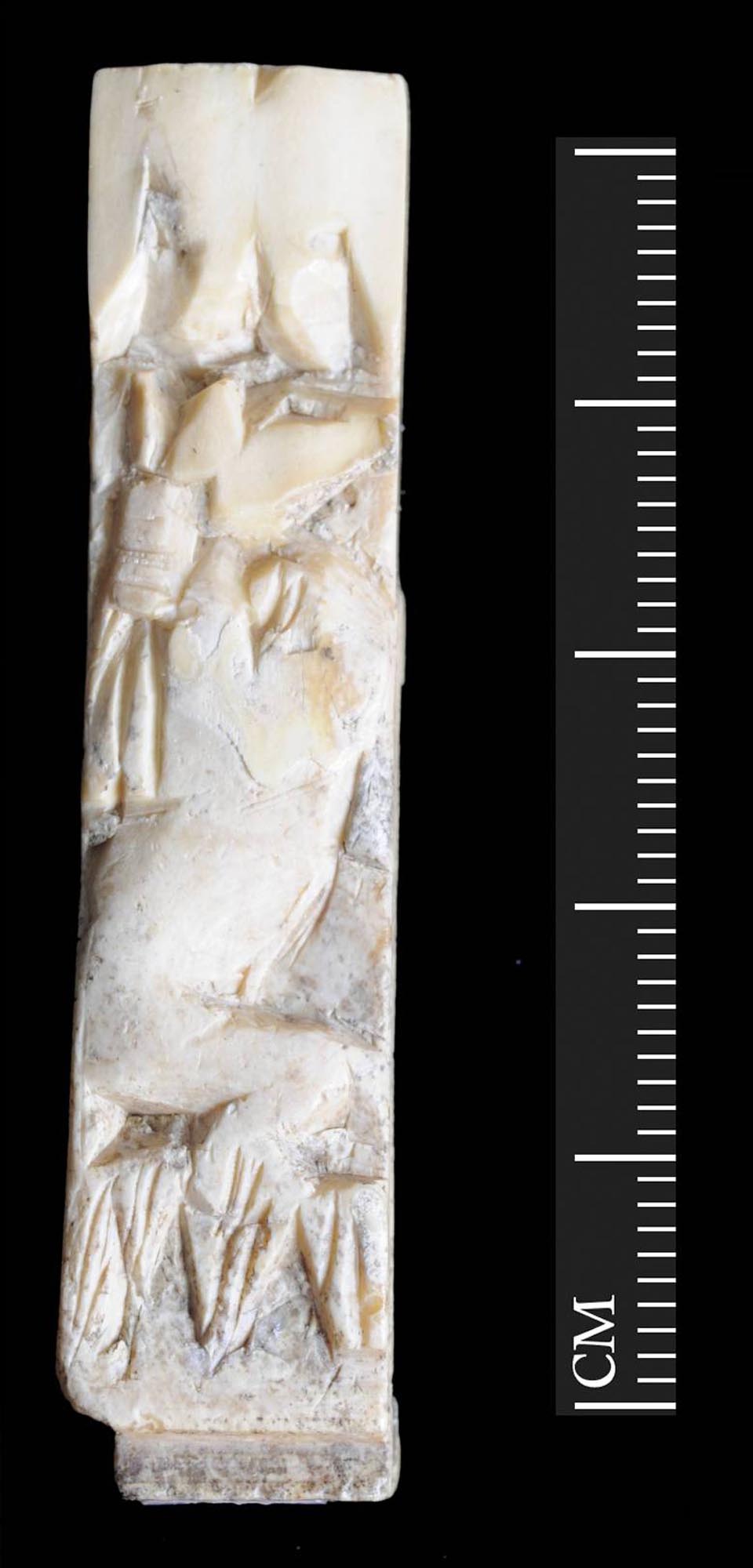
University of Leicester Archaeological Services
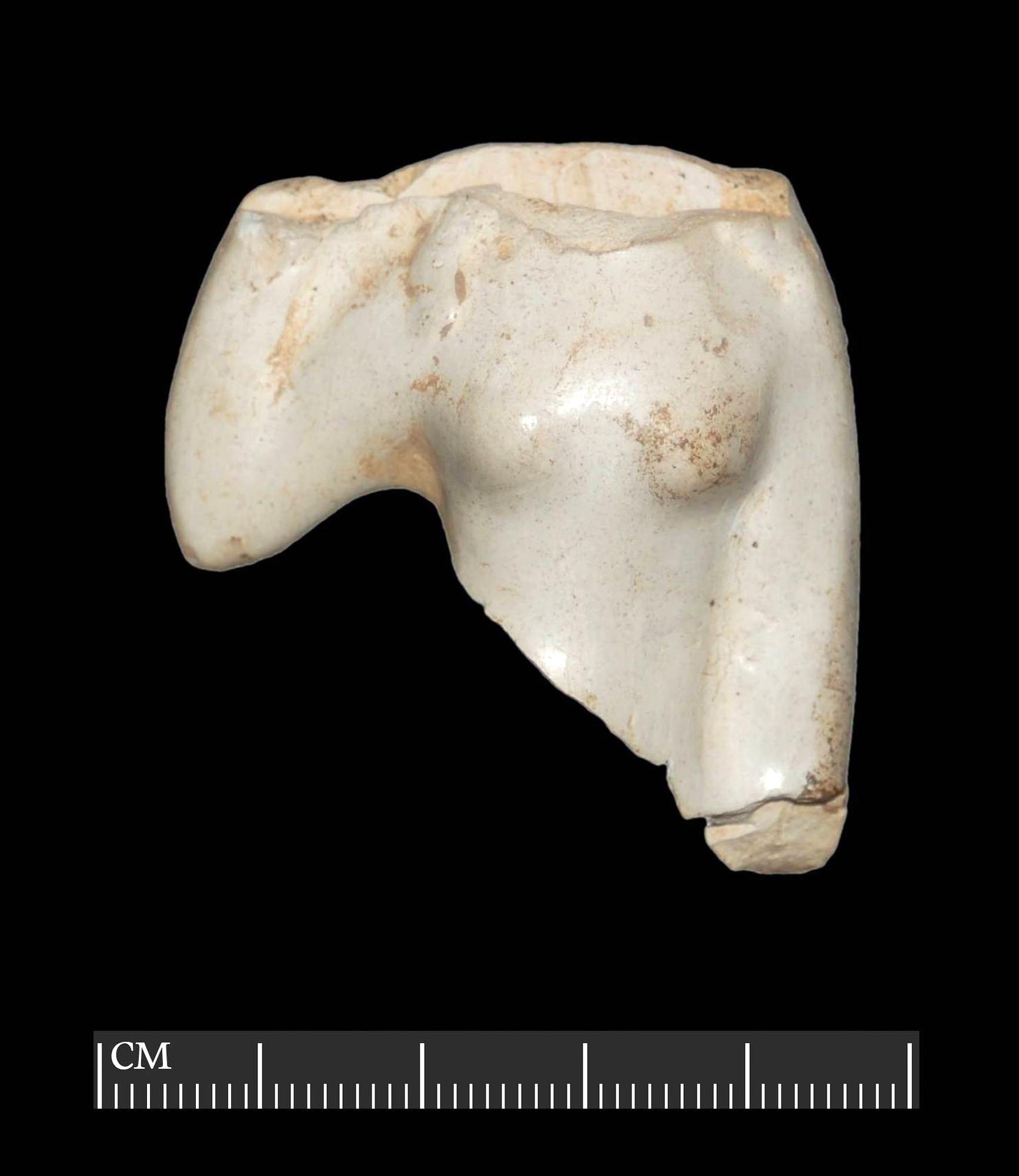
University of Leicester Archaeological Services
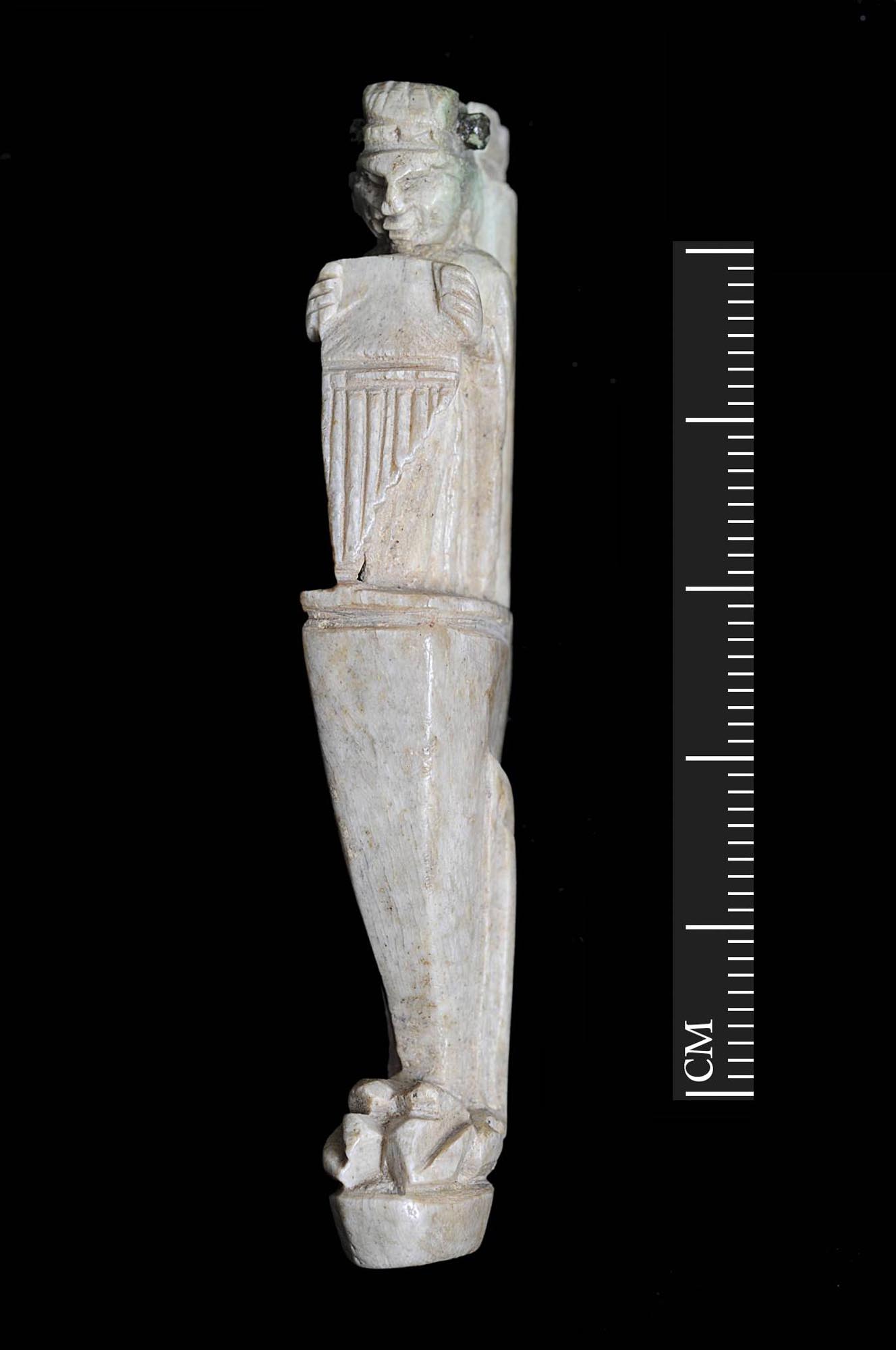
University of Leicester Archaeological Services
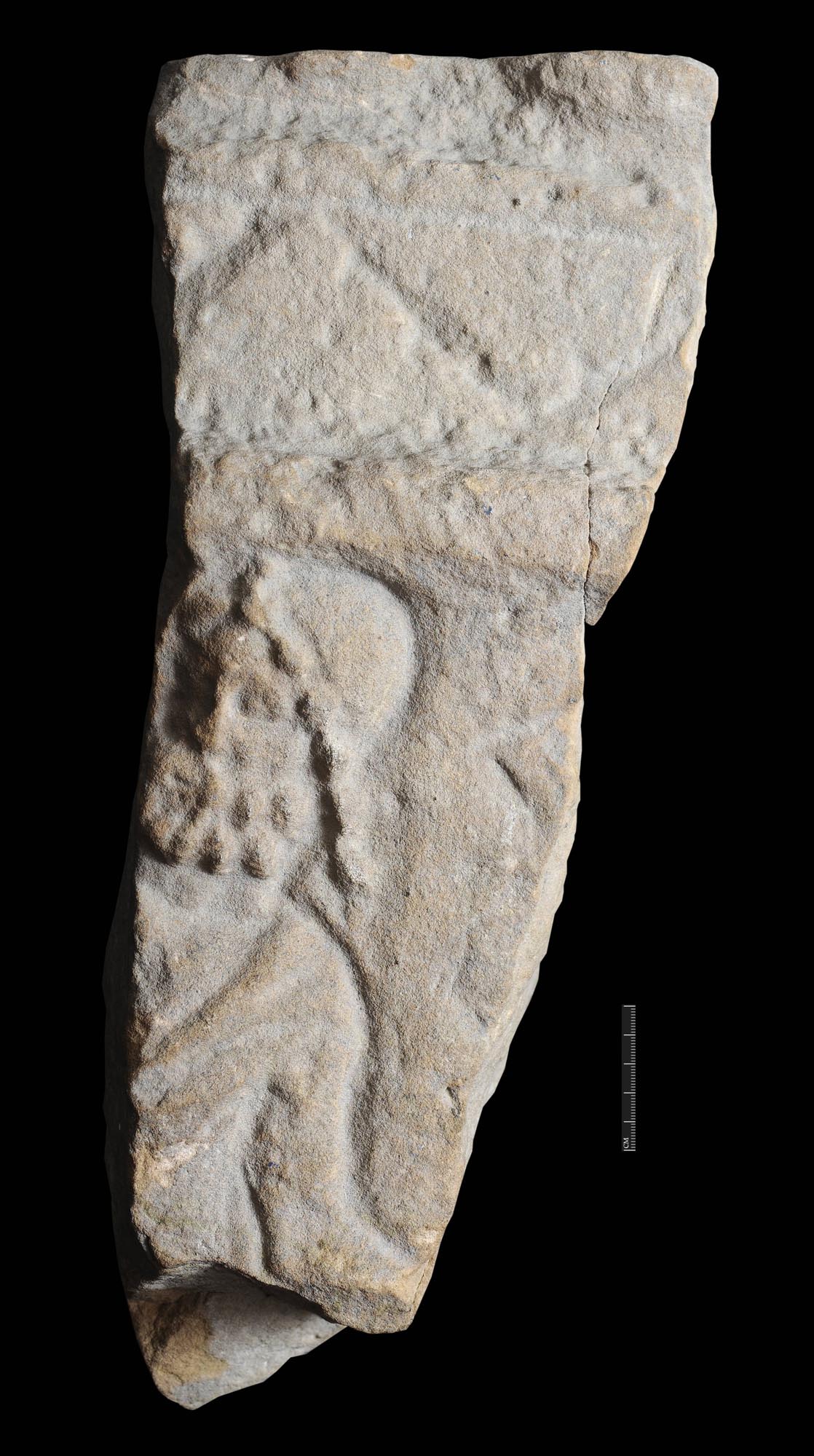
University of Leicester Archaeological Services
The Romans in Leicester
Roman Leicester
(47- 500) A military fort was erected, attracting traders and a growing civilian community to Leicester (known as Ratae Corieltauvorum to the Romans). The town steadily grew throughout the reign of the Romans.
Medieval Leicester
(500 – 1500) The early years of this period was one of unrest with Saxon, Danes and Norman invaders having their influences over the town. Later, of course, came Richard III and the final battle of the Wars of the Roses was fought on Leicester’s doorstep.
-
The Castle Motte1068

-
Leicester Cathedral1086

-
St Mary de Castro1107

-
Leicester Abbey1138

-
Leicester Castle1150

-
Grey Friars1231

-
The Streets of Medieval Leicester1265

-
Leicester Market1298

-
Trinity Hospital and Chapel1330

-
Bow Bridgecirca 1350

-
Church of the Annunciation1353

-
John O’Gaunt’s Cellar1361

-
St John's Stone1381

-
Leicester Guildhall1390

-
The Magazine1400

-
The Blue Boar Inn1400

-
The High Cross1577

Tudor & Stuart Leicester
(1500 – 1700) The wool trade flourished in Leicester with one local, a former mayor named William Wigston, making his fortune. During the English Civil War a bloody battle was fought as the forces of King Charles I laid siege to the town.
Georgian Leicester
(1700 – 1837) The knitting industry had really stared to take hold and Leicester was fast becoming the main centre of hosiery manufacture in Britain. This new prosperity was reflected throughout the town with broader, paved streets lined with elegant brick buildings and genteel residences.
-
Great Meeting Unitarian Chapel1708

-
The Globe1720

-
17 Friar Lane1759

-
Black Annis and Dane Hills1764

-
Leicester Royal Infirmary1771

-
New Walk1785

-
Freemasons’ Hall1790

-
Gaols in the City1791

-
Friars Mill1794

-
City Rooms1800

-
Development of Highfields1800

-
Wesleyan Chapel1815

-
20 Glebe Street1820

-
Charles Street Baptist Chapel1830

-
Glenfield Tunnel1832

-
James Cook1832

Victorian Leicester
(1837 – 1901) The industrial revolution had a huge effect on Leicester resulting in the population growing from 40,000 to 212,000 during this period. Many of Leicester's most iconic buildings were erected during this time as wealthy Victorians made their mark on the town.
-
Leicester Union Workhouse1839

-
Campbell Street and London Road Railway Stations1840

-
The Vulcan Works1842

-
Belvoir Street Chapel1845

-
Welford Road Cemetery1849

-
Leicester Museum & Art Gallery1849

-
King Street1850

-
Cook’s Temperance Hall & Hotel1853

-
Amos Sherriff1856

-
Weighbridge Toll Collector’s House1860

-
4 Belmont Villas1862

-
Top Hat Terrace1864

-
Corah and Sons - St Margaret's Works1865

-
Kirby & West Dairy1865

-
The Clock Tower1868

-
Wimbledon Works1870

-
The Leicestershire Banking Company1871

-
St Mark’s Church and School1872

-
Victorian Turkish Baths1872

-
The Town Hall1876

-
Central Fire Stations1876

-
Aylestone Road Gas Works and Gas Museum1879

-
Gas Workers Cottages1879

-
Leicestershire County Cricket Club1879

-
Welford Road Tigers Rugby Club1880

-
Secular Hall1881

-
Development of Highfields1800

-
Abbey Park1881

-
Abbey Park Buildings1881

-
Victoria Park and Lutyens War Memorial1883

-
Leicester Fosse FC 18841884

-
Leicester Coffee and Cocoa Company Coffee Houses1885

-
St Barnabas Church and Vicarage1886

-
Abbey Pumping Station1891

-
Luke Turner & Co. Ltd.1893

-
West Bridge Station1893

-
Thomas Cook Building1894

-
The White House1896

-
Alexandra House1897

-
Leicester Boys Club1897

-
Grand Hotel and General Newsroom1898

-
Highfield Street Synagogue1898

-
Western Park1899

-
Asfordby Street Police Station1899

-
Leicester Central Railway Station1899

Edwardian Leicester
(1901 – 1910) Electric trams came to the streets of Leicester and increased literacy among the citizens led to many becoming politicised. The famous 1905 ‘March of the Unemployed to London’ left from Leicester market when 30,000 people came to witness the historic event.
-
YMCA Building1900

-
The Palace Theatre1901

-
Pares's Bank1901

-
Coronation Buildings1902

-
Halfords1902

-
High Street1904

-
George Biddles and Leicester's Boxing Heritage1904

-
Municipal Library1905

-
Leicester Boys Club1897

-
The Marquis Wellington1907

-
Guild Hall Colton Street1909

-
Women's Social and Political Union Shop1910

-
Turkey Café1901

Early 20th Century Leicester
(1910 – 1973) The diverse industrial base meant Leicester was able to cope with the economic challenges of the 1920s and 1930s. New light engineering businesses, such as typewriter and scientific instrument making, complemented the more traditional industries of hosiery and footwear manufacturing.
-
Dryad Handicrafts1912

-
De Montfort Hall1913

-
Leicester During the First World War1914

-
Fox’s Glacier Mints1918

-
Statue of Liberty1919

-
Housing in Saffron Lane1924

-
Winstanley House1925

-
Housing in North Braunstone1926

-
Lancaster Road Fire Station1927

-
The Little Theatre1930

-
Saffron Hill Cemetery1931

-
Braunstone Hall Junior School1932

-
Former City Police Headquarters1933

-
Savoy Cinema1937

-
Eliane Sophie Plewman1937
-
City Hall1938

-
Athena - The Odeon Cinema1938

-
The Blitz in Highfields1940

-
Freeman, Hardy and Willis - Leicester Blitz1940

-
Leicester Airport1942

-
Leicester’s Windrush Generations1948

-
Netherhall Estate1950
-
Housing at Eyres Monsell1951

-
Silver Street and The Lanes1960

-
Bostik1960

-
Auto-Magic Car Park (Lee Circle)1961

-
University of Leicester Engineering Building1963

-
Sue Townsend Theatre1963

-
Central Mosque1968

-
Belgrave Flyover1973

Modern Leicester
(1973 – present day) Industry was still thriving in the city during the 1970s, with the work opportunities attracting many immigrants from all over the world. While industry has declined in recent years, excellent transport links have made Leicester an attractive centre for many businesses. The City now has much to be proud of including its sporting achievements and the richness of its cultural heritage and diversity.
-
Haymarket Theatre1973

-
The Golden Mile1974

-
Acting Up Against AIDS1976

-
Belgrave Neighbourhood Centre1977

-
Diwali in Leicester1983

-
Leicester Caribbean Carnival1985

-
Samworth Brothers1986

-
Jain Centre1988

-
Guru Nanak Dev Ji Gurdwara1989

-
King Power Stadium2002

-
LCB Depot2004

-
Curve2008

-
BAPS Shri Swaminarayan Mandir2011

-
Makers Yard2012

-
VJ Day 80th Anniversary2020

- Roman Leicester
- Medieval Leicester
- Tudor & Stuart Leicester
- Georgian Leicester
- Victorian Leicester
- Edwardian Leicester
- Early 20th Century Leicester
- Modern Leicester
















































































































































